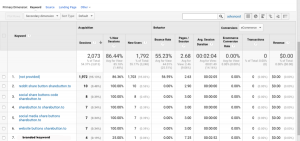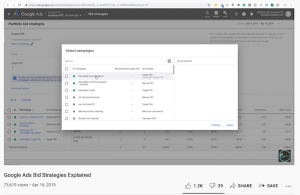— October 16, 2018

Nowadays, a great variety of brands are trying to gain the upper hand over their competitors by using a new marketing platform – live online videos. What is the reason for the popularity of these online videos in various industries? We asked ourselves these questions and tried to dig out some answers.
What are the benefits of using live videos?
Over the years, the relationship between people and mass media has faced some fundamental changes. Those changes include the arrival of Netflix as well as mobile phones with web access and the all-important social media. They led to a fragmentation of the marketers’ audience, which is why brands had to do something different. They had to refrain from engaging with a large number of people in one go and conform to a more individualised, segmented and targeted approach.
However, recently, there have been developments that imply that there is still a great desire to view linearly – in real time. That desire has been incited by popular social media platforms, such as Instagram and Facebook, which have introduced new functions for video broadcast. The increasing popularity of such videos indicates that, even though traditional channels and their content aren’t that interesting anymore, people are still very much interested in watching short broadcasts on their devices.
Hence, this has become a new method that brands can use to reach and engage with their target audience. After all, you cannot go wrong with the sense of immediacy these videos produce. That feeling, as well as feedback and engagement, are not something pre-recorded adverts can offer you. Moreover, immediacy can help the viewers avoid that dreadful “missing out” feeling, which is not a feature recorded clips are known for.
Since studies have shown that our brains can process visuals more quickly than words (60.000 times as fast), the popularity is not that surprising. That one video, if it’s creative and striking, can give you much better results, in terms of grabbing someone’s attention and standing out from the rest, than any textual update.
Furthermore, with all the advancements in technology, people tend to spend more time on the internet even when they’re on the move. And, make no mistake, brands have noticed this opportunity, especially since live videos on Facebook are on autoplay. Those videos will play while someone’s scrolling idly down their timeline, meaning there’s a high chance the person in question will stop and watch it. The potential is immense, and it has still not been used enough.
Of course, that potential is not enough if you want to turn leads into conversions. However, evidence has shown that live videos can do that too.
Brightcove conducted a study recently that showed, in the words of Bill Fisher of eMarketer, astonishing results. Namely, 43% out of 47% of adults in Britain who were exposed to branded content on some of the social platforms actually purchased the product or service in question.
So, what does that tell us? According to Bill Fisher, this indicates a strong ROI for marketers. Even though they based this statistic on all videos, not just live clips, it still shows that people are paying attention to the video content social platforms are distributing.
Furthermore, live videos are also showing signs of reputational benefits. Another study, this time conducted by Twitter, unveiled a thing or two about brand favourability. It showed that live streaming an event can actually lead to an increase of 63% in regard to favourability.
Nevertheless, social media, as well as pre-recorded TV and YouTube ads are not yet a thing of the past. It’s just now obvious that live videos are probably going to play a more important role in the marketing mix for a variety of brands that are trying to find new and interesting ways of engaging with their audience.
Success stories
In theory, all of this sounds amazing. However, to actually prove the success of live videos, we believe it’s vital to “paint a picture” with some success stories. Thus, in the following paragraphs, we will examine brands that have proven that live videos actually work.
Land Rover
In April 2016, Land Rover decided to make a step in the right direction and start broadcasting test drives on Periscope and Facebook Live. That way, all their fans were able to see the vehicles in real-time action. The broadcasts were put up on Friday afternoons, and they showed on- and off-road action. Furthermore, the live videos also included Q&A segments.
According to Peter Biven, the Head of Global Digital Marketing at this famous company, those videos allowed them to show their vehicles to potential customers. Moreover, they were also able to engage with fans on social media platforms by using some new and smart methods.
These live videos allow Land Rover to, among other things, show off their products, as well as broadcast content in real-time. Mr Biven, who finds all of this quite compelling, also said that those videos could serve as a replacement for test driving the vehicles. They are a great way to see the vehicles in action before actually driving them personally. Furthermore, the transparency of these videos cannot be compared to that of TV ads or other branded video content. There is no polishing nor editing.
Grazia UK
Another success story is the one of Grazia UK. This woman’s magazine achieved great success with its live publication-making video. Filmed in Facebook’s offices in the UK capital, 14 videos showed the magazine creation. Those videos led to around 600,000 views – an outstanding number. Furthermore, the behind-the-scenes footage also sparked a Brexit debate, which proved to be a roaring success. That debate led to many questions and involvement of Facebook users – all in real-time.
The editor of Grazia, Natasha Pearlman, admitted that she wasn’t convinced that the method would work. She wasn’t sure if the readers were actually interested in seeing how Grazia creates the publication. However, many features of these videos, such as the lack of script, the fact that they were live and that they showed the behind-the-scenes of the famous magazine, led to incredible views. The audience got a glimpse of an unedited, authentic side of Grazia in which media manipulation took no part. Moreover, since Facebook Live is not like regular television, it accumulated a great audience – just because the viewers were sharing their views about Brexit with others. That sharing effect is actually what made this endeavour into live videos such a success. The video views surged once the Brexit debate started.
Weight Watchers
Weight Watchers, a well-known weight loss company, also knows how to use Facebook Live to its advantage. By broadcasting live videos, they allow their members to engage with celebrity slimmers. That way, the stars can immediately answer viewer questions, as well as share their useful diet tips and tricks. Furthermore, they have also used Facebook Live to showcase new products by building up anticipation. Thus, they got people excited and anxious to see new product announcements.
Buzzfeed
Now, unlike Land Rover, Grazia and Weight Watchers, Buzzfeed is an online content provider. Hence, even though they don’t have to sell products or services, they still have to draw in an audience that will pay attention to their content. And, in order to do so, they had to think of new ways to spark interest.
One of those methods (April 2016) included a live Facebook video that showed two of their employees in a rather strange situation. They were trying to make a watermelon explode by adding rubber bands on it. Needless to say, the video was a huge success, bringing in about 807,000 viewers at one point. Meanwhile, 315,000 people commented on the video. And, that’s not all! The video even got into the trending section on Twitter.
Now, the premise of this video was somewhat ridiculous. However, it proved to be a great way of sparking curiosity and an amusing debate. What’s more, it showed a unique side of Buzzfeed – a side that emphasises good humour and the overall quirkiness of the brand. Also, the video didn’t have a script, since no one at Buzzfeed knew how long it would go on.
Using live videos to your advantage
Now that we’ve revealed all the benefits, as well as a few successful examples, it’s time to take it a step further. Let’s see how you could use this approach.
Make sure to give videos great descriptions and titles
Your success could depend on your “hook”. Therefore, no matter if you are showcasing new products or building a marketing campaign, try to think of a striking title and description. The title and the description need to be memorable so that people can immediately get interested in your videos – even before they start watching them.
Create a powerful concept
The theme of the video also has to be strong in order to generate results and impact the viewers. Thus, try to think of something that can be summarized in a few words. It can be anything at all – an interview or behind-the-scenes footage of your office life. You could also create a powerful theme around product unveiling or product demos.
However, if you’re not sure whether you can create such a video, then you can always opt to make an unusual one. It doesn’t have to be directly linked to your business. It can actually show a part of your brand personality through a powerful and unique concept.
Encourage engagement
The whole point of making a live video is to engage with your viewers and to encourage them to interact with you. Therefore, try to do just that during the broadcast. Even after the video ends, the feedback and the comments will still be there, so you can continue responding afterwards as well.
Tell your audience when you’ll be having live streams
In order to gain more views, you ought to remind people about the live streams and their scheduled broadcast time. That way, they will remember to tune it.
Ideally, you ought to reach people who already have an interest in your brand. You cannot just rely on those that will be idly browsing their social media platform during the broadcast. After all, those who are already interested are more likely to purchase your products afterwards.
Have enough employees who can participate in the discussion
In order to extend the dialogue and encourage viewers to comment, you will need enough employees to respond and participate in the discussion. It all comes down to that sense of immediacy we mentioned earlier. By replying straight away on as many comments and questions as possible, that sense will grow stronger within your viewers. What’s more, they will feel valued and connect to your brand on a more personal level.
Experiment, experiment, experiment
Since you can broadcast pretty much anything in live videos, you should try out different ideas. That sort of experimenting will allow you to discover which approach works the best, as well as what brings more engagement.
Don’t forget the #FacebookLive hashtag
If you want to increase your views, don’t forget to use this hashtag on your live video. Some users are just looking for live videos to watch, and by using that hashtag, they will easily become viewers.
Have (at least) a 10-minute broadcast
If your broadcast is long, people are more likely to watch your live video, share it with friends and engage with your brand. Because of that, Facebook recommends having videos that are at least 10 minutes in length. According to the company, that’s the ideal run-time, but you can also stream videos that are up to 90 minutes.
Furthermore, their research also showed that people are more likely to spend more time (three times longer) watching a live video than watching it later when the broadcast is done. Thus, a brand that only uses pre-recorded videos can experience a great increase in engagement if it opts for live videos instead. However, make sure not to cut off the broadcast too early because you might lose some potential conversions.
Figure out who your audience is
Before you start doing live videos, it’s vital to learn more about your customer base and your target audience. According to a US study by UBS Evidence Lab, the audience that enjoys this type of content consists of two-thirds of all internet users who are anywhere between 18 and 34 years old. Therefore, if that audience makes sense for your business, you can target your content to a younger audience.
Know which events your audience wants to see
Streaming live videos from trade shows, industry conferences, sponsored concerts and sporting events is also a fantastic opportunity to boost the engagement. That way, they will provide their viewers with a glimpse of the atmosphere or live interviews.
Work on post-live promotion
It’s also crucial to keep promoting your successful live videos after the broadcast ends. If they’re unique and attention-grabbing, you can still use them for marketing purposes in the future. People can also leave additional feedback and comments on those videos, thus keeping the engagement rate up.
Evaluate the results
You never know what these live videos will bring you. Users will throw in many interesting comments, and at the end, you will have unique metrics to analyse. Use that data to your advantage. Discover new insights that you can use for the further advancement of your brand. Also, use that data to determine the themes of your future live streams and how to interact with your audience.
Final thoughts
It’s safe to say that live videos are not going anywhere anytime soon. They are poised to become a big part of the marketing mix, especially since big social platforms, like Twitter, Instagram, Facebook and Snapchat, have been pushing them for a while now.
Still, take note. The success of your live videos will largely depend on your capability to create a clear, powerful concept. You should base your efforts on two things:
- a compelling idea
- a clear goal of what you want to achieve with your videos.
Only then will showing your spontaneous, edit-free and unique side to the world prove to be worthwhile.
Digital & Social Articles on Business 2 Community
(65)






